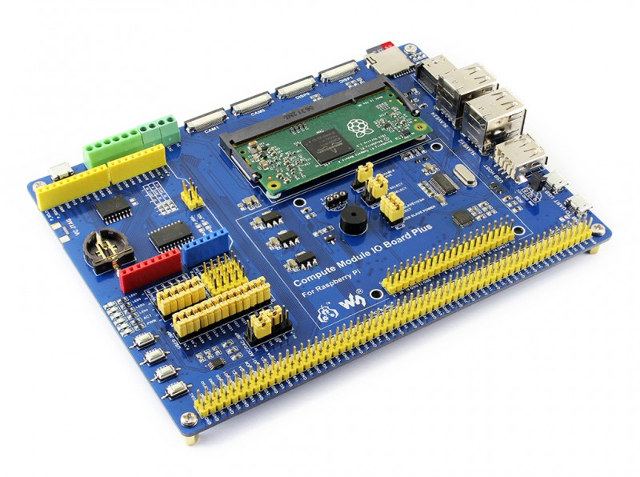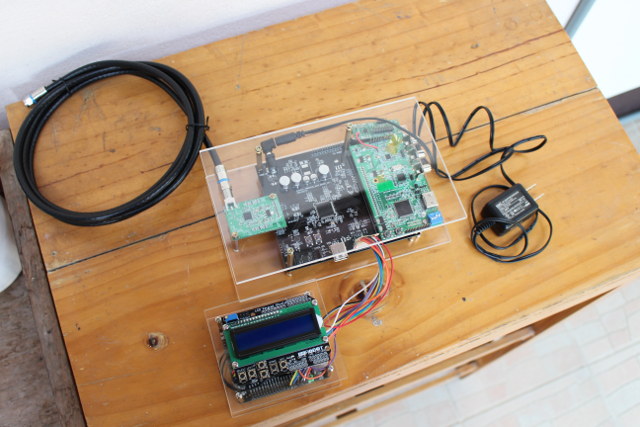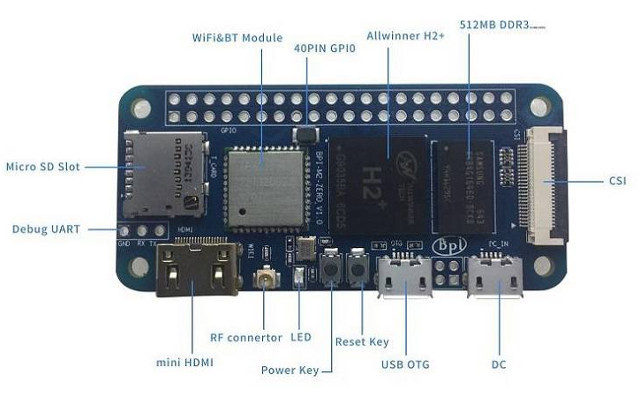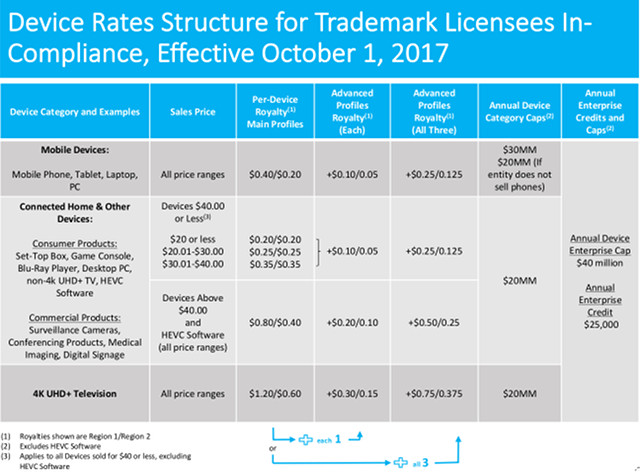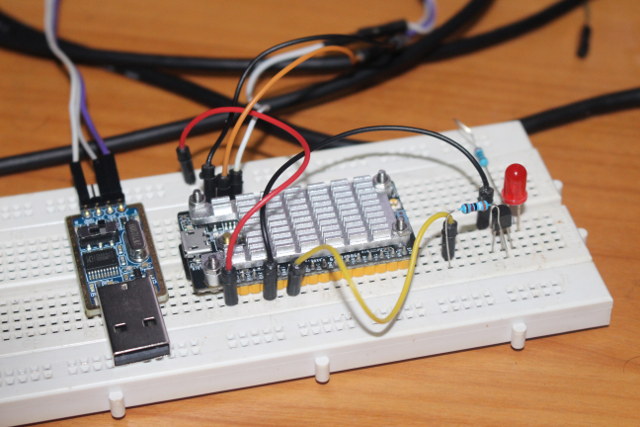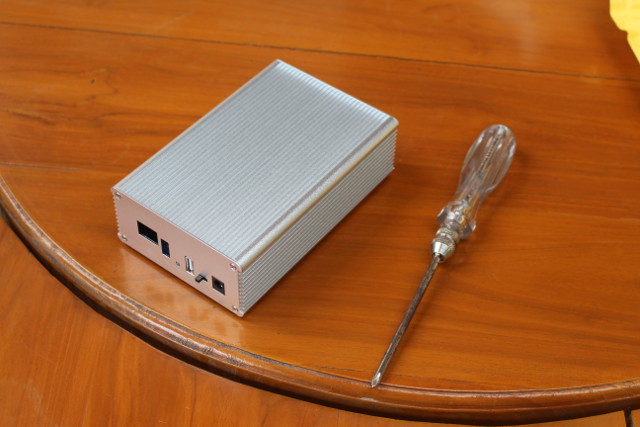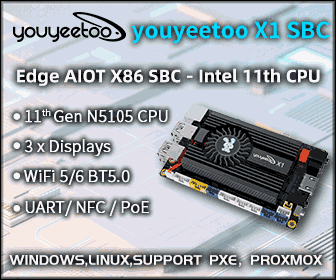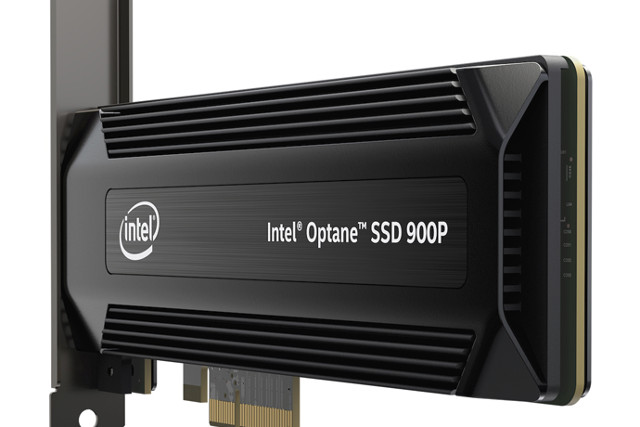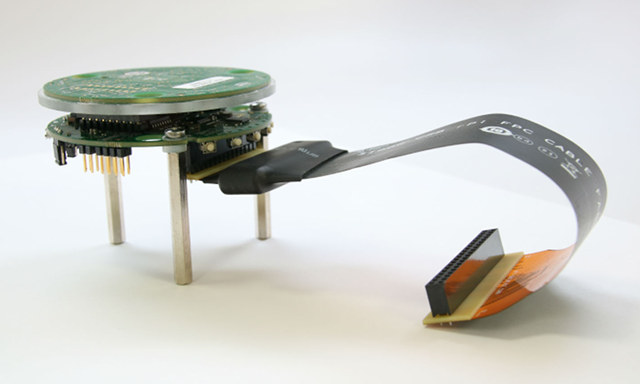Raspberry Pi Compute Module CM3L and CM3 are fairy inexpensive at $25 and $30 respectively, but if you want to get the complete development kit with Compute Module IO Board, CM3 and CM3L modules, and accessories you’ll need to spend around $150 plus shipping. A cheaper option might be Waveshare “Compute Module IO Board Plus for Raspberry Pi CM3, CM3L” with many of the same features as the original Compute Module IO board, plus some extras like terminal blocks for ADC/DAC or RTC battery, which I first found on DX for $49.95 including shipping. Waveshare Compute Module IO Board Plus specifications: Compute Module socket for Raspberry Pi CM3/CM3L I/O headers 40-pin Raspberry Pi GPIO header (3) GPIO header for all pins exposed by the modules (2) Arduino headers for shields (10) 10-bit ADC/16-bit DAC screw terminals (11) 3x 5-pin sensor interface (13) 1-WIRE interface, for connecting single-bus devices like DS18B20 […]
Giveaway Week – Muses-β DTV Modulator and Video Encoder
The next item for giveaway is rather specialized hardware, as V-Bridge Muses-β allows you to take raw video input via HDMI or video composite, encode it and module to your DTB standard (DVB-T, ATSC… ) and get the video through your TV tuner via a cable, or over-the-air if you add your own an amplifier and antenna. The system is controlled by an STM32 board with LCD display and button, and you can operate directly from the board, selecting various option. I used a TV box as input, and U4 Quad hybrid set-top box to get the video signal and output it to my TV when I reviewed the system with DVB-T / QPSK modulation. The system is limited to MPEG-2 up to 1080p30 encoding since it’s what the SoC supports. I’m giving away the complete “turn key solution” shown in the first photo to one lucky winner. To enter […]
$15 Banana Pi M2 Zero Board is a Raspberry Pi Zero W Clone with a Quad Core Processor
Many development boards have followed Raspberry Pi 2/3 form factor in recent years, including Hardkernel ODROID-C2 and Pine64 ROCK64, but so far I had not seen any boards leveraging Raspberry Pi Zero (W) form factor. SinoVoIP will change that, as they’ve just launched Banana Pi M2 Zero (aka BPI-Zero) board powered by Allwinner H2+ quad core processor, leveraging Raspberry Pi Zero W form factor, and now selling on Aliexpress for $15 plus shipping. Banana Pi M2 Zero specifications: SoC – Allwinner H2+ quad core Cortex A7 processor @ up to 1 GHz with Mali 400MP2 System Memory – 512 MB DDR3 Storage – micro SD card slot up to 64GB Video/Audio Output – mini HDMI Connectivity – 802.11 b/g/n WiFi and Bluetooth LE (AP6212 module with options for AP6181, AP6335) Camera – 1x MIPI CSI connector supporting 8-bit YUV422 CMOS sensor, CCIR656 protocol for NTSC and PAL, 5MP camera, 1080p […]
H.265 / HEVC License Pricing Updated for Low Cost Devices
Most video codecs such as H.264, H265/HEVC, MPEG-2, MPEG-4… requires the manufacturer to pay a license fee. The fees are then added to the final product, but the actual codec fees are usually unknown to the end user. One of the exceptions are VC-1 and MPEG-2 license fees for Raspberry pi boards which are sold separately for respectively £1.20 ($1.58 US) and £2.40 ($3.16 US). So I assumed that licenses pricing was mostly private and negotiated based on volume. But a recent article stated that HEVC Advance, independent licensing administrator, revised the royalties for lower-price devices (<$40) with the price table below providing a good insight into pricing for different device types, unit prices and regions. The new discounted royalty rate category applied to consumer and commercial products selling for less than $40 including set-top boxes, surveillance cameras, game console and others. A simplified Patent License Agreement (PPL) was also announced in order […]
NanoPi Duo Quick Start Guide – Ubuntu, Breadboard, Mini Shield & mSATA SSD
As far as I know NanoPi Duo is the only quad core ARM Linux development board that can fit on a breadboard. We’ve already seen it’s much smaller than Raspberry Pi Zero, and the company offer a mini shield exposing USB ports, Ethernet, a few I/Os, and an mSATA slot in in NanoPi Duo Starter Kit Review – Part 1: Unboxing and Assembly. I’ve finally played with it this week-end, and will report what I had to do to blink a LED when connected to breadboard, and my experience using the mini shield with an mSATA SSD, WiFi connectivity, and cooling under load. Flashing Ubuntu 16.04.2 firmware image to NanoPi Duo As with many other Allwinner development boards, you should first check if Armbian is available for the board. NanoPi Duo is not supported, but it’s said to work with Orange Pi Zero image minus support for WiFi. Since the […]
Giveaway Week – NanoPi NEO NAS Kit with NEO 2 Board
Time has come to organize another giveaway week. I used to mainly give away TV boxes, but due to recent regulations that will not be possible anymore, and instead this giveaway week will include Linux and IoT development boards, and other accessories. I’ll start with NanoPi NEO NAS Kit v1.2. NanoPi NEO NAS Kit v1.2 is a low cost kit NanoPi NEO or NEO 2 board that takes a 2.5″ hard drive. I’ve tested it with NanoPi NEO 2 board and OpenMediaVault, and found to perform optimally for this type of device (USB 2.0 to SATA), with SAMBA reads & writes achieving 40 MB/s. The hardware given away includes the NAS Kit v1.2 and a NanoPi NEO 2 board. You’ll just need to add a micro SD card with the OMV image, a hard drive, and a 12V/2A (or greater) power supply. To enter the draw simply leave a comment […]
Intel Optane 900P Series SSD Launched for Desktop PCs
Intel and Micron first unveiled 3D Xpoint technology (pronounced “crosspoint”) in 2015 with the promise of 1000x faster storage and 1000x better endurance than NAND flash used in SSDs. Performance was later reduced to about 7x better IOPS in a prototype, and Intel started to sell the technology under the Optane brand with the 375GB SSD DC P4800X for the enterprise market. Since then Intel entered the consumer market with 16GB and 32GB Optane M.2 cards which are meant to be used as disk cache in compatible systems thanks to their high random I/O performance, and now the company has announced the first consumer grade 3D Xpoint SSDs for desktops and work stations with Optane 900P Series available in HHHL (CEM3.0) and U.2 15mm form factors, and with random I/O performance up to four times faster than competitive NAND-based SSDs. Optane SSD 900P Series specifications: Capacity – 280 to 480 […]
Intel Speech Enabling Developer Kit Works with Alexa Voice Service, Raspberry Pi 3 Board
We’ve known Intel has been working on Quark S1000 “Sue Creek” processor for voice recognition for several months. S1000 SoC is based on two Tensilica LX6 with HiFi3 DSP, some speech recognition accelerators, and up to 8x microphones interfaces which allows it to perform speech recognition locally. The solution can also be hooked to an application processor via SPI, I2S and USB (optional) when cloud based voice recognition is needed. Intel has recently introduced their Speech Enabling Developer Kit working with Amazon Alexa Voice Service (AVS) featuring a “dual DSP with inference engine” – which must be Quark S1000 – and an 8-mic array. The kit also includes a 40-pin cable to connect to the Raspberry Pi 3 board. Intel only provided basic specifications for the kit: Intel’s dual DSP with inference engine Intel 8-mic circular array High-performance algorithms for acoustic echo cancellation, noise reduction, beamforming and custom wake word […]


